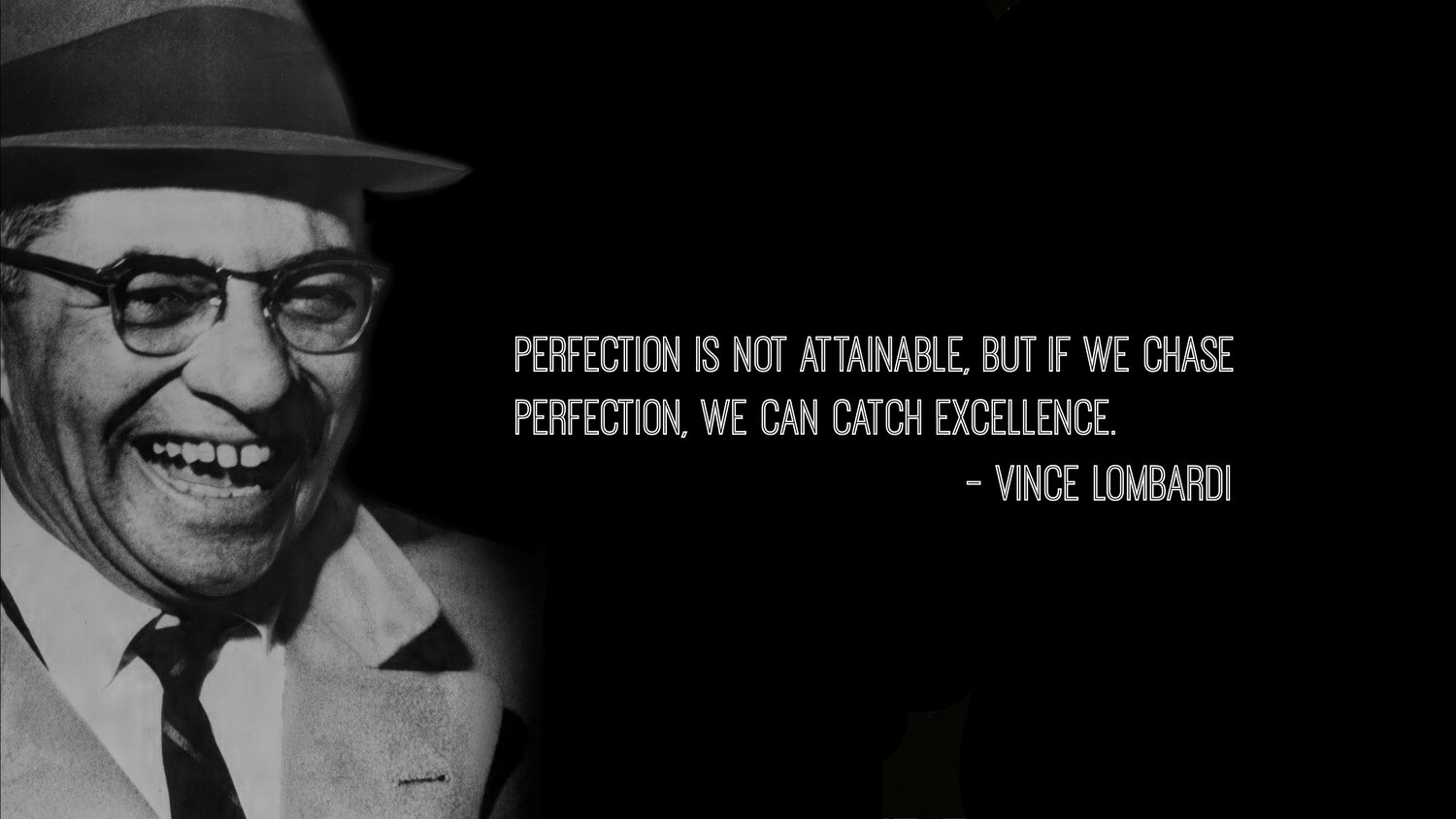
I’ve always loved the story about Vince Lombardi, legendary coach of the Packers, who would start off every football season with the now famous line, “Gentleman, this is a football.”
Lombardi knew the power of “the basics”. Randy Pausch, the former Computer Science professor at Carnegie Mellon who passed away from pancreatic cancer over a decade ago, also wrote about the importance of fundamentals in his wonderfully inspiring book, “The Last Lecture”.
“Fundamentals, fundamentals, fundamentals…As a college professor, I’ve seen this as one lesson so many kids ignore, always to their detriment: You’ve got to get the fundamentals down. Otherwise the fancy stuff is not going to work.”
In business there are fundamentals too, which we ignore to our detriment. I continue to find in the leadership teams with which we work that just like in football or any other “competitive” endeavor. If you as a leader don’t get the fundamentals right, your team is definitely in danger of losing the game – and maybe the season.
“There is only one way to succeed in anything and that is to give it everything.”
So maybe it’s time for a reminder. Before the year gets too far along, here’s 3 Execution ‘fundamentals’ to help you and your team stay on track this year.
1) Define, Document and Communicate Your Plan
What’s your Plan? More importantly, have you defined your Top 1 and 2 priorities, what Stephen Covey calls “Wildly Important Goals” that are critical to moving your business ahead in the coming year?
- If you’ve taken the time to document your plan, make sure that everyone knows what the plan is by having a Communication strategy, including “interactive” Monthly Town Halls. A recent Gallup survey found out that 78 % of employees don’t believe that their leaders have a clear direction for the company. What’s “interactive”? If you have over ten people in a meeting, divide them into groups and ask each group to brainstorm clarifying questions after the presentation. And follow up with “What did you hear?” to ensure that you’ve gotten the right message across. Check out our blog, “Four Keys to Navigating the Growth Curve” for additional resources to up your planning game!
- If you don’t have a plan, schedule time to develop one with your team or pick up a copy of “Scaling Up”, check out Chapter 8 and begin to work through the process yourself. Or give us a call or drop us an email. We’re happy to help!
2) Develop Action Plans and Assign Accountability for each Goal
Have you and your team developed action plans (what we call Management Accountability Plans or MAPs) outlining what tasks need to be accomplished to reach each Goal for the quarter AND do you have weekly (or at least biweekly) targets and benchmarks that will help you stay on track and not get distracted?
- If you do have the right project planning and metrics for each of your goals, make sure that each goal has an Owner who’s accountable for driving it to completion – and yelling loudly if it goes off track.
- If you don’t have the right project planning and metrics in place, schedule time with an accountability partner to brainstorm the steps you need to take to accomplish the goal (four or five should do it for a 90 Day Quarter to keep you on track), put a deadline on each action and define what it means to be done.
Finally, if you’re not sure how to get started, check out our blog on how to develop better action plans.
3) Implement a “cadence of accountability”
 Another Coveyism – here’s where our favorite meeting comes in handy – a Weekly Tactical. Are you sitting down with your team weekly to review the progress on Quarterly goals? And have you tied everyone’s accountability back in some way to a goal so that they understand how the decisions that they’re making help the company to improve?
Another Coveyism – here’s where our favorite meeting comes in handy – a Weekly Tactical. Are you sitting down with your team weekly to review the progress on Quarterly goals? And have you tied everyone’s accountability back in some way to a goal so that they understand how the decisions that they’re making help the company to improve?
- If you have clear accountability in your business, make sure you don’t overload or rely solely on a couple of individual high performers. You may burn them out, or worse, unmotivate them. Get others to step up. And make sure that your leaders are sitting down weekly with their teams to review progress on their team’s goals.
- If you don’t have clear accountability, it’s easy for team members to throw each other under the bus or not get things done. REMEMBER: only one person can be accountable. Back to #2 above. Assign an owner. And to up your game, we recommend giving the owner a second lieutenant or accountability “noodge” to help them when they get stuck. Remember, peer to peer accountability is the best method for getting things done.
- Finally, if you are not sure, then you probably don’t have clearly defined accountability. (You will know it if you have it). Check out “Creating a Culture of Accountability” for more help and to get you started.

So how good are your Execution Fundamentals? Let us know and if you need some assistance with developing your Culture of Accountability and Disciplined Execution this year – reach out. We’d love to help!
Tags: Business advice for the mid-market, Executive Education for Small Business, Executive Roundtables, Leadership Development for Small Business, Leadership Development in Philadelphia, Overcoming small business challenges
